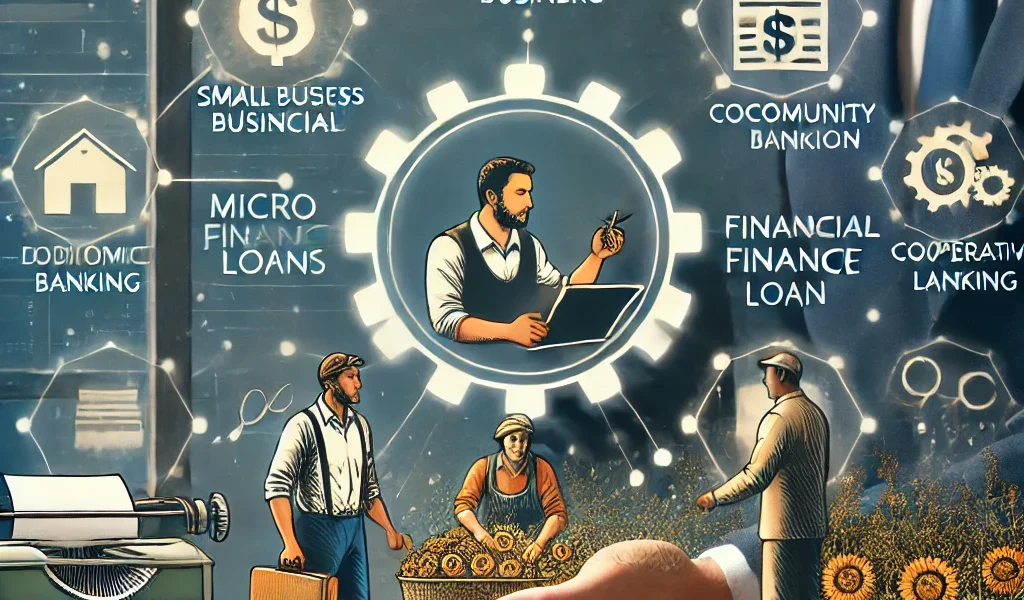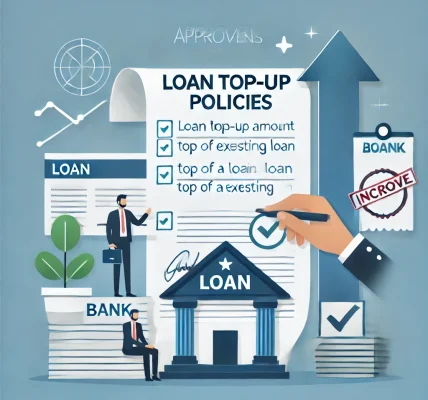Introduction
Microfinance loans have revolutionized access to credit, especially for small entrepreneurs, low-income individuals, and those in developing regions who lack access to traditional banking. These loans provide financial support, helping individuals start or expand businesses, improve living conditions, and achieve financial stability.
This article explores how microfinance loans work, their benefits, eligibility criteria, and their impact on economic growth.
Disclaimer: This article is for informational purposes only. Loan policies and eligibility may vary based on financial institutions and regulatory bodies. Always verify details with an official lender before applying.
What Are Microfinance Loans?
Microfinance loans are small-scale loans offered to individuals or small businesses who lack access to traditional financial services. These loans are typically: ✅ Low-value loans with flexible repayment terms
✅ Unsecured (do not require collateral)
✅ Provided by microfinance institutions (MFIs), non-governmental organizations (NGOs), or government-backed programs
Microfinance loans aim to promote self-sufficiency, entrepreneurship, and economic empowerment, especially in rural and underserved communities.
How Do Microfinance Loans Work?
Microfinance loans function through community-based lending models with simplified loan approval procedures.
1. Loan Application
Individuals or small business owners apply for a loan through an MFI or lender that specializes in microfinance. Requirements typically include basic identification, proof of business activity, and sometimes, a business plan.
2. Loan Disbursement
Once approved, the borrower receives the loan amount, either in cash, digital payment, or through direct purchase of business materials.
3. Repayment Structure
Repayments are often made weekly or monthly, with options for group lending (where members guarantee each other’s loans) or individual lending.
4. Monitoring & Support
Many microfinance institutions provide financial education, mentorship, and business support to help borrowers succeed.
Types of Microfinance Loans
Microfinance institutions offer different types of loans based on the borrower’s needs and financial situation.
1. Income-Generating Loans
- Used for small businesses, farming, or trade activities.
- Encourages entrepreneurship and self-reliance.
2. Group Loans (Joint Liability Loans)
- Provided to groups where members guarantee each other’s repayment.
- Reduces risk and improves loan accessibility.
3. Emergency Loans
- Offered for medical emergencies, education, or unexpected expenses.
- Provides financial relief to low-income households.
4. Housing Microfinance Loans
- Helps families improve or build homes in underserved areas.
- Supports better living conditions and infrastructure development.
5. Education Loans
- Covers school fees, books, and tuition for students from low-income backgrounds.
- Encourages higher education and skill development.
Who Can Benefit from Microfinance Loans?
Microfinance loans are designed for individuals and businesses that lack access to traditional credit options.
✅ Small Business Owners & Entrepreneurs
Microfinance loans help small business owners grow their businesses by providing working capital for inventory, equipment, and expansion.
✅ Women Entrepreneurs
Many microfinance institutions prioritize lending to women, empowering them economically and promoting financial independence.
✅ Rural Communities & Farmers
Microfinance loans support rural populations by funding agriculture, livestock, and cottage industries.
✅ Low-Income Households
People with limited financial resources can use microfinance loans for housing improvements, healthcare, and education expenses.
✅ Unbanked Populations
Individuals without access to banks or financial institutions can build credit history and financial literacy through microfinance services.
Advantages of Microfinance Loans
✔ Easy Accessibility
Microfinance institutions provide quick and flexible loan approvals, unlike traditional banks that require extensive documentation and credit history.
✔ No Collateral Requirement
Most microfinance loans are unsecured, making them accessible to individuals who do not own property or assets.
✔ Encourages Entrepreneurship
By funding small businesses, microfinance loans promote self-employment and income generation.
✔ Financial Inclusion
Microfinance loans help integrate the unbanked population into the financial system, fostering economic development and poverty reduction.
✔ Social and Economic Growth
Microfinance loans have positive social impacts, empowering women, creating jobs, and improving communities.
Challenges & Risks of Microfinance Loans
❌ High Interest Rates
Some MFIs charge higher interest rates due to the increased risk associated with lending to borrowers without credit history.
❌ Loan Defaults & Debt Cycles
Borrowers who struggle to repay loans may fall into a debt cycle, leading to financial strain.
❌ Limited Loan Amounts
Microfinance loans are usually small, which may not be enough for larger business investments.
❌ Lack of Regulation
In some regions, microfinance institutions operate without proper oversight, leading to unfair lending practices.
How to Apply for a Microfinance Loan
If you are considering a microfinance loan, follow these steps:
✅ Step 1: Find a Reliable Microfinance Institution (MFI)
Research reputable lenders, NGOs, or government programs that offer microfinance loans.
✅ Step 2: Assess Loan Requirements
Check eligibility criteria, interest rates, repayment terms, and loan limits before applying.
✅ Step 3: Submit Necessary Documents
Common documents include ID proof, address proof, business details, and income statements (if applicable).
✅ Step 4: Loan Disbursement & Utilization
Once approved, use the loan responsibly for the intended purpose.
✅ Step 5: Repay on Time
Ensure timely repayments to maintain a good financial standing and access future loans.
Conclusion
Microfinance loans play a crucial role in economic development, financial inclusion, and poverty alleviation. They empower small businesses, women entrepreneurs, and underserved communities, enabling financial independence and sustainable growth.
However, borrowers should carefully evaluate loan terms, interest rates, and repayment conditions before applying. Responsible borrowing and timely repayments ensure long-term financial success.
For more details, consult a registered microfinance institution or a financial expert to explore the best loan options.
Disclaimer: Loan terms vary by lender and region. Always verify details with official sources before applying.




